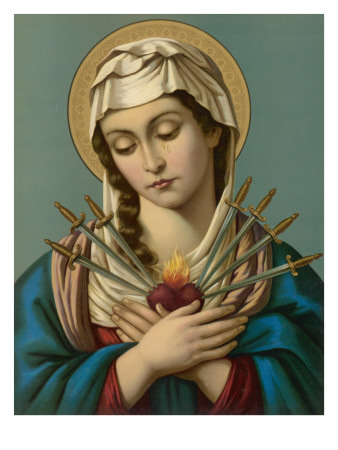
Today we celebrate Candlemas, otherwise known as the Purification of the Blessed Virgin Mary.
Yet this is a contradiction in terms. For the Blessed Virgin Mary was born without stain. She is immaculate from the moment of conception. She has no need of purification.
Still, the Blessed Virgin Mary remains a creature. She was created, as were you and I. And whilst She was without stain or impurity, She lived as a creature.
Unlike us, She would never have been tempted. For, unlike us, She never knew sin. Unlike us, Her sole desire was to please God. And unlike us, this is all She ever did – love Her God and Creator perfectly.
Therefore, She represents perfect humanity and thus, is our perfect example. And, as our perfect example, She, as did her Son, acted only from obedience.
Here, then, is the key’s to the apparent contradiction. Today’s feast is about this perfect obedience, as we witness the Blessed Virgin Mary, born immaculate, following the law, God’s law, perfectly.
As a mere creature, She – just as all Jewish mothers were obliged to – set off for the great temple in Jerusalem, to undergo Her own purification, forty days after the birth of Her Son.
But Our Lady did not make this journey alone. It was a journey made with Her family, the Holy Family. As She also meant to present Her Child, Jesus, to the priest in the Temple.
For, according to Jewish tradition, it was customary for a woman to take her first-born son to the temple and offer him to God, acknowledging that He is primarily a child of God.
And so, obedient to God’s law, the Holy Family traveled to the temple, ascended the steps and entered.
The Candlemas procession symbolizes this pilgrimage.
We, the faithful, follow in their footsteps, processing, with our blessed and lighted candles, which represent the light of Christ. In fact, St. Anselm said:
The wax of the candles signifies the virginal flesh of the Divine Infant, the wick figures His soul and the flame His divinity.
And, just as our Blessed Lady and St. Joseph entered the temple, so do we, carrying these symbols of the Christ Child.
As the Holy Family arrived at the temple, the Divine Light was joyously received. The old man Simeon had long awaited this moment. He instantly recognized the Holy Child and welcomed Him with open arms … exclaiming:
My eyes have seen Thy salvation, which Thou hast prepared before the face of all peoples; a light to the revelation of the Gentiles, and the glory of Thy people Israel.
St. Luke ii. 30-32
In the light of Simeon’s words, this feast can be understood as the completion or fulfillment of Christmas. Thus, many keep the crib until this day.
Yet, it falls in time after Epiphany. Thus, it can be understood in terms of the accomplishment of this prophecy, as Jesus (through His Baptism , miracles and preaching) begins to manifest His glory into the world.
But this Feast also prefigures the Paschal Mystery. For Simeon says to Mary:
Behold this child is set for the fall, and for the resurrection of many in Israel, and for a sign which shall be contradicted.
And thy own soul a sword shall pierce, that, out of many hearts, thoughts may be revealed.
St. Luke ii: 34-6.
Thus, Simeon not only intimates who this Divine Child is, sent to redeem us – he also knows His fate. And therefore, he understands that this small Child will contradict the ways of the world and suffer greatly for it.

He also sees that a sword of sorrow will pierce the soul of His mother, as She watches, enduring the pain, suffering and death of Her Son.
This solemn Feast is therefore a pivotal point in the Liturgical Year. For it connects the wood of the manger with the wood of the cross. And in so doing, takes us from the joy of the Nativity towards the sorrow of the Crucifixion.
As we carry our blessed candles processing to the temple, let us gaze upon their light, pondering these things in our hearts.
And like Simeon, let us recognise the Divine Light, shining in this darkened world. And what a darkened world it has become, particularly for the family.
So, on this day and throughout this month dedicated to the Holy Family, let us pray to them for the protection of the family.
Divine Infant Jesus, have mercy on us.
Holy Mary, pray for us.
St. Joseph, pray for us.
Holy Family of Nazareth, please protect our families.
Foreword for Monarchy by Roger Buck
Buying Books at Amazon Through These Links Gives Us a Commission. This Supports Our Apostolate. Thank You if You Can Help Us Like This!




